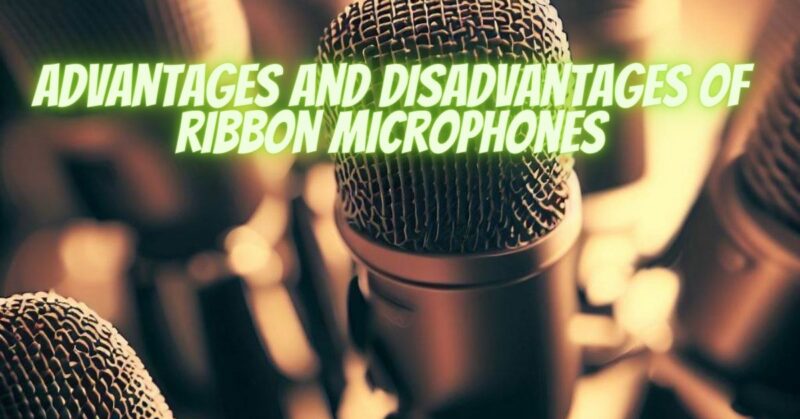Ribbon microphones, known for their vintage charm and distinctive sound, have been making a resurgence in the audio industry. With a design that harkens back to the early days of recording, ribbon microphones offer a unique sonic character and capture sound in a way that sets them apart from other microphone types. In this article, we will explore the advantages and disadvantages of ribbon microphones, shedding light on their strengths and considerations for their optimal use.
Advantages of Ribbon Microphones:
- Natural and Warm Sound: Ribbon microphones are revered for their smooth and natural sound reproduction. Their delicate ribbon element, typically made of aluminum or other metallic material, lends a warmth and vintage character to the recorded sound. Ribbon microphones excel in capturing the natural timbre and nuances of vocals, string instruments, and brass instruments, making them a preferred choice for many audio professionals seeking a classic, rich sound.
- High-Frequency Roll-Off: One of the unique characteristics of ribbon microphones is their natural high-frequency roll-off. This roll-off can provide a pleasing and smooth response, particularly when recording brighter sound sources or in acoustically bright environments. The gentle attenuation of high frequencies can help reduce harshness or sibilance in recordings, resulting in a more pleasing sonic presentation.
- Excellent Transient Response: Ribbon microphones are known for their exceptional transient response. Their thin and lightweight ribbon element allows them to accurately capture fast transients, such as the attack of drums, percussion, and other instruments. This quality makes ribbon microphones well-suited for recording dynamic and fast-paced musical performances, providing an authentic representation of the instrument’s natural attack and decay.
- Figure-8 Polar Pattern: Most ribbon microphones employ a figure-8 polar pattern, capturing sound equally from the front and back of the microphone while rejecting sound from the sides. This polar pattern allows for versatile recording techniques, enabling the microphone to capture the direct sound source while minimizing unwanted ambient noise. The figure-8 pattern also facilitates the recording of duets or multiple sound sources facing each other, adding flexibility to recording sessions.
Disadvantages of Ribbon Microphones:
- Fragility and Sensitivity: One of the primary considerations with ribbon microphones is their delicate construction and sensitivity. The ribbon element is susceptible to damage from excessive air pressure, rough handling, or exposure to strong blasts of sound. Care must be taken when positioning and transporting ribbon microphones to avoid any mishaps that could potentially damage the ribbon element.
- Lower Output Level: Compared to other microphone types, ribbon microphones tend to have a lower output level. This means that they may require additional gain from a preamplifier or mixer to achieve optimal signal levels. It’s important to consider the microphone’s output level when setting up your recording chain and ensure adequate gain staging to maintain a clean and noise-free signal.
- Limited High-Frequency Extension: Due to the design and construction of ribbon microphones, they generally have a limited high-frequency extension compared to other microphone types, such as condenser microphones. This characteristic may not be ideal for certain applications that require capturing very high-frequency content with precision, such as capturing the shimmering harmonics of cymbals or intricate detail in vocals.
Conclusion:
Ribbon microphones offer a unique and vintage sonic character that has made them a favorite among many audio enthusiasts and professionals. With their natural and warm sound, excellent transient response, and figure-8 polar pattern, ribbon microphones bring a touch of elegance to recordings. However, it’s important to consider their fragility, lower output level, and limited high-frequency extension when choosing and using ribbon microphones. By understanding their advantages and disadvantages, audio professionals can harness the distinct sonic qualities of ribbon microphones and enhance their recording endeavors with a touch of classic authenticity.


